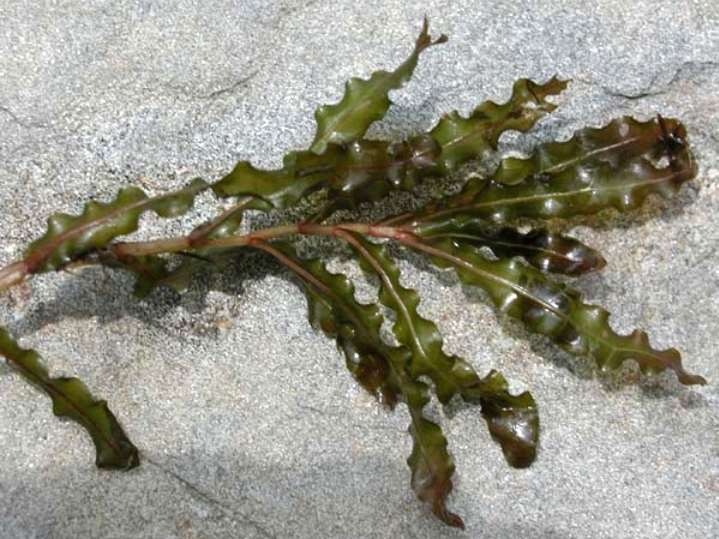Curly-Leaf Pondweed

Curly-Leaf Pondweed
(Potamogeton crispus)
Priority: - Established / Strategic Control
Tags: Aquatic
Identification and Reproduction
Identification
- Curly pondweed has wavy, toothed, alternate leaves.
- The leaves become denser at the bottom of the stem.
- The serrated leaves are a unique distinguishing feature of this species.
- The leaves are green, reddish, or brown, and the plant has yellow or red rhizomes.
- The plant grows up to five metres long, and forms dense mats of vegetation.
Reproduction
- It has a winter annual type of life cycle.
- It reproduces vegetatively with buds called “turions” which develop over winter.
- It is one of the first aquatic plants to begin growing in spring, and it grows quickly during the season.
- It also produces small flowers that can be found above water.
- The flowers are in a terminal spike and have small fruits which it uses to reproduce sexually.
Habitat & Ecology
- This plant can grow at cold temperatures and with little light.
- It prefers brackish or alkaline water, and can easily thrive in polluted waters.
- It survives over winters even under frozen water.
- Curly pondweed is found in rivers, streams, marshes, and ponds.
Impacts
Ecological:
- The dense colonies produced by Curly pondweed can block aquatic activity and obstruct fish movements.
- The vegetation can create eutrophication (increased phosphorus concentrations in waterways), which cause blooms of algae.
- The plant outcompetes native aquatic vegetation and reduce biodiversity.
Management
- Prevent transport of Curly pondweed by cleaning, draining, and drying boats and other aquatic equipment after leaving bodies of water.
- Do not purchase Curly pondweed as aquarium vegetation. Never dispose of aquarium plants into drains or waterways.
Mechanical/Manual Control:
- Mechanical removal can be done by raking out the plant early in the season, but this will not remove all parts of the plant.
- Any plant parts removed should be disposed of in a landfill.
- Benthic barriers can also be used to restrict light and growth.
Resources
For more identification and control methods for curly-leaf pondweed check out the Invasive Species Council of Manitoba's page here.
Header photo (Leslie J. Mehroff).



